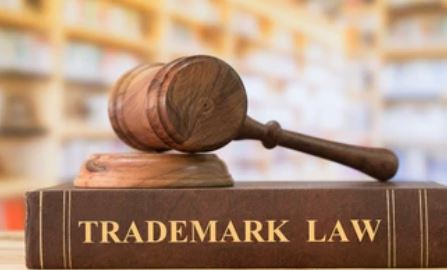Deceptive Similarity in Trademark
Introduction
Trademark is a kind of intellectual property which is capable of being represented graphically, it can be any word, design, symbol, phrase, design, shape, packaging of goods etc. Trademarks are used to distinguish one person’s goods and services from that of others. It is many types, for example, service mark, proprietary mark, product mark, collective mark, word mark. certification mark etc. Trademark represents the reputation and goodwill of the brand or company and gives its owner exclusive right to use the mark. So, it becomes very important to protect to trademarks from infringement. Trademark is infringed when it is used without the owner’s knowledge or permission, a trademark is used in violation when another party does so in a way that might cause consumer confusion about the good or service.
Infringement can be done in the following manner:
Direct infringement: The Law relating to Direct Infringement of the Trademark is defined in Section 29 of the Trademark Act, 1999. Direct violation is defined by law as occurring in the following situations:
• Similar or Deceptive
• Used without Owner’s Permission
• Use of a similar trademark for the same products
In this article, we will discuss similar or deceptive trademarks with the relevant case laws and Indian jurisprudence development over time.
Deceptive Trademark
Such a mark that is likely to create confusion in the buyer’s mind is referred to as a deceptive mark. The phrase “deceptively similar” implies that even if the similarities are not exact or similar, their confusing nature, which can be perceived through sound or look, that is, visually or phonetically, can lead to the inference that the infringer intends to focus on the goodwill and reputation of the prior user of the trade mark, as the attribute of confusion involves the customer’s mental state who, upon seeing the similarities, may be confused.
Section 2(1)(h) of the Act defines the phrase “deceptively similar” as follows:
“A mark shall be deemed to. be deceptively similar ‘to another mark if it so nearly resembles that other mark as to be likely to deceive or cause confusion;”

It is crucial to take into account whether two marks are “deceptively similar,” “similar,” “nearly resembling,” or its equivalent when it comes to the registration of trademarks, which includes the application process, opposition and rectification proceedings, and infringement and passing-off lawsuits. When deciding whether a trademark has been infringed, appearance is important. If you want to name your company Xactly Corp. (pronounced “Exactly”), the brand Exactly Corp. will take offence (pronounced “in excess”). Although the two names don’t sound comparable when pronounced and have quite distinct meanings, they would seem extremely similarly in print and on record covers. Furthermore, the band that has the odd name Exactly is well-known.
The principles established by the courts in deciding whether two marks are deceptively similar to one another would also apply to deciding whether two marks are similar or resemble one another.
Factors that must be taken into consideration while determining deceptive similarity:
• Similarity in the nature, and purpose of the rival traders’ goods
• The nature of the marks—whether they are words, created words, descriptive or non-descriptive names, geographical etc.
• The type of goods for which they are already being used as trademarks or are likely to be used as trademarks.
• The degree of phonetic, visual, and conceptual similarity between the marks and the essential features.
• The types of buyers who are likely to purchase items with the marks, their level of education and intellect, and the amount of care they are most likely to take while making their purchase.
• The means used to buy the items or place an order for them.
Judicial Pronouncements
1. Wockhardt v Mahesh Medical and General Stores :
In this case, both parties were involved in producing and selling a drug named azithromycin dihydrate. The plaintiff manufactured and market it under the trade mark AZIWOK. part (AZI) of the name is taken from the drug name, and suffix part (WOK) from his business name, WOCKHARDT . The plaintiff has been using the mark since 1995 and was a registered proprietor of the trade mark. In 2002, the defendant started using trade mark ‘AZIWIN; in the market for the azithromycin tablets. The plaintiff sued the defendant on the contention that defendant has used a deceptively similar mark for the same product of the plaintiff. In this case the court gave some principles for deciding deceptive similarity :
• Marks must be looked at from the first impression of a person of average intelligence and imperfect recollection;
• Overall structure, phonetic similarity and similarity of idea are important and both visual and phonetic test must be applied;
• It cannot be overlooked that both the trademarks are in relation to a common drug Azithromycin and, therefore, possibility of confusion has enhanced.
• Phonetic similarity is not to be ignored when the competing words are written differently. Moreover, the question has to be approached from perspective of an Indian of average intelligence and imperfect recollection. This is specially in case of drugs, the test is to be applied strictly even through the drug in question may be one that is sold not across the country
The court held that even while the common prefix AZI is evidently derived from the generic name of the medication Azithromycin, if it is guided by these criteria, there is no question at all that the mark AZIWIN is deceptively similar to the plaintiff’s trade mark AZIWOK.
2. Corn Products Refining Co. Vs Shangrila Food Products Ltd :
The respondent Shangrila Food Products was a manufacturer of biscuits, and the appellant, Corn Product Refining Co was a United Stated based corporation. The respondent filed an application to register the mark ‘‘Glvita’ on November 5, 1949and this mark was already used before the registration application. On 31st August 1942, the appellant registered the mark ‘‘Glucovita’. The registration of the Respondent’s mark was disputed by the Appellant. The Supreme Court held that the registered mark of the Respondent was likely to produce confusion or deception since the public had grown used to the Appellant’s trademark.
In evaluating claim of market reputation
• Consideration must be given to whether the trademark has developed a reputation with the general public.
• Open for courts to take evidence into account.
• Product and reputation must be truly connected.
• Enquiry from the viewpoint of a potential buyer
The Supreme Court said that it is a well-accepted rule that trademarks with common components must be used to some extent in the market where they are being used or will be used.
3. Cadila Healthcare vs Cadila Pharmaceuticals :
Here, the appellant was in the sale and production of a drug named ‘FALCIGO’ and the respondent also stated selling the drug under the ‘FALCITAB’ trademark. The contention of the appellant was that prefix of the respondent’s drug appeared per see to deceptively similar.
The High Court held that there is no likelihood of confusion because drugs are ordinarily handled by persons like doctors and pharmacists who are unlikely to be deceived or confused by similarly named products. The appellant appealed in Supreme Court. The Supreme Court held that No matter how strictly the distribution of medicines is controlled, Drugs created to treat identical conditions always come with a certain level of risk. This danger is based on possible compositional variances, side effects, and buyer misunderstanding, all of which have the potential to be unpleasant, if not disastrous—and potentially cause death or other severe health issues.
Conclusion
As we have seen, a trademark plays an important role in building a name and is associated with goodwill. If any mark looks deceptively similar, it can be a ground for refusal of trademark registration. So, in deciding whether a mark is deceptively similar or not, some factors like the kind of the mark, the types of buyers who are most likely to purchase the items and the method of purchasing the items should be taken into consideration.
Author: Akanksha Chaudhry, 2nd year, Rajiv Gandhi School of Intellectual Property Law, IIT Kharagpur, in case of any queries please contact/write back to us at support@ipandlegalfilings.com or IP & Legal Filing.


